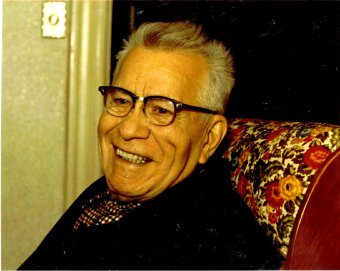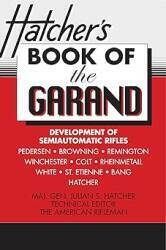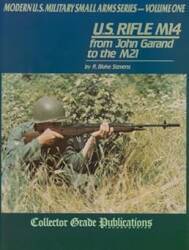
The History of the M1 Garand —
From World War II to Korea
World War II to Korea
About 1.5 million M1 Garands were produced by the same manufacturers between the end of World War II in 1945 and the end of production in 1957. Harrington & Richardson and International Harvester built M1s during 1953 through 1956. A final and very small lot was built at Springfield Armory in early 1957, using components already on hand. Beretta also built some M1s using Winchester tooling.

The History of the M1 Garand Rifle
The Early Designs and Initial Adoption
Springfield Armory and World War II Production
Much of the M1 inventory underwent repair or rebuilding at the arsenals after World War II.
The U.S. Marine Corps officially adopted the M1C as their sniper rifle in 1951, modifying it the following year with a different scope and flash hider.
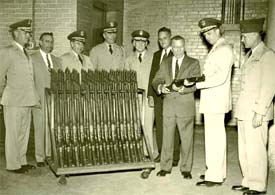
John Garand showing his rifle design to several military officers in the early 1950s.
Many standard M1s were converted to the M1D sniper model during the Korean War, but few made it to that theatre. The M1C was the principal sniper weapon of the U.S. Army in Korea, and the standard sniper rifle of the USMC.
The M1 was used by U.S. forces in Korea, and starting immediately after World War II, sold or given to U.S. allies. This eventually included America's WWII adversaries Germany, Japan, and Italy!
Korea was the source of several of the stories about how the enemy infantry had learned that the Garand's empty clip made a distinctive metallic "ping" as it ejected. They would listen for that sound and then rush what they thought to be a suddenly unarmed American position.
In turn, Americans troops learned to throw an empty clip while firing the first of eight rounds in a fresh clip — possibly luring the enemy out of cover to face an M1 with seven rounds remaining.
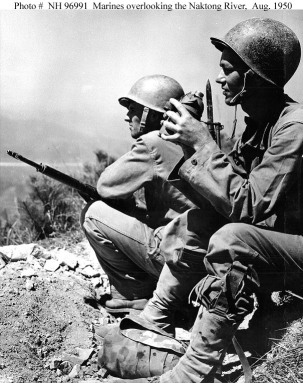
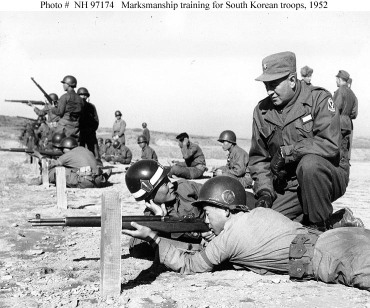
The Wikipedia page has a list of its users. Reorganized into table form, that data is shown below.
| Nations Using the M1 Garand Rifle | |||
| Nation | Number | Date | Notes |
| Argentina | about 30,000 | before 1964 | Some were converted to accept magazines |
| Brazil | "large numbers" | early 1950s | Some were converted to 7.62x51mm NATO and to accept FN FAL magazines |
| Cambodia | ? | ? | |
| Denmark | 69,810 | prior to 1964 | Received from U.S. government |
| 20,000 | ? | Purchased from Italy | |
| Ethiopia | 20,700 | 1960s | |
| France | 232,500 | 1950-1964 | Addition units used by Free French Forces and the French Foreign Legion |
| West Germany | 46,750 | prior to 1965 | |
| Greece | 186,090 | prior to 1975 | Also 1,880 M1C/M1D |
| Indonesia | 55,000 to 78,000 | prior to 1971 | Also a few M1Cs, plus some from Italy |
| Iran | 165,490 | prior to 1964 | |
| Israel | up to 60,000 | prior to 1975 | |
| Italy | 232,000 | 1950-1970 | Plus 100,000 built under license by Beretta |
| Jordan | estimated 25,000-30,000 | prior to 1974 | Plus 100,000 built under license by Beretta |
| Japan | ? | after 1945 | Manufactured by Howa for the Japan Self-Defense Forces |
| Laos | 36,270 | 1950-1975 | |
| Norway | 72,800 | prior to 1964 | |
| Pakistan | possibly 150,000 | prior to 1975 | |
| Paraguay | 30,750 | prior to 1975 | |
| Philippines | 34,300 | 1950-1975 | Plus 2,630 M1D |
| Saudi Arabia | 34,530 | prior to 1975 | |
| South Korea | 296,450 | 1964-1974 | |
| South Vietnam | 220,300 | 1950-1975 | Plus 520 M1C/M1D |
| Thailand | 40,000 | prior to 1965 | |
| Turkey | 312,430 | 1953-1970 | |
| Venezuela | 55,670 | prior to 1975 | |
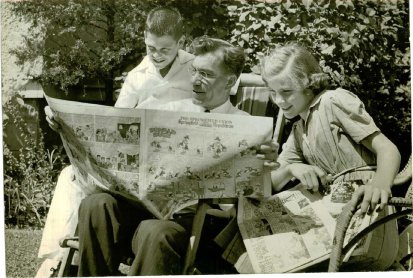
John Garand was awarded two government medals for his work: the Medal for Meritorious Service in 1941, and the Medal for Merit in 1944. However, he received no royalties for his design, he had signed over all patents of his invention to the U.S. Government. He was simply paid as an engineer for Springfield Armory, and he never earned more than $12,000 a year during his 34-year career with the U.S. Ordnance Corps. There was a attempt to give him a $100,000 cash award in appreciation for his work — a bill was introduced in the Congress but it was not passed.
Garand stayed on in his position as a consulting engineer until he retired in 1953. He died in 1974, still living in Springfield, Massachusetts.
The M1 Garand rifle was the direct ancestor of the M14 rifle.
The M14 replaced the M1 as the standard service rifle in 1957. However, that was not the end of the M1's career, even within the U.S. military....
